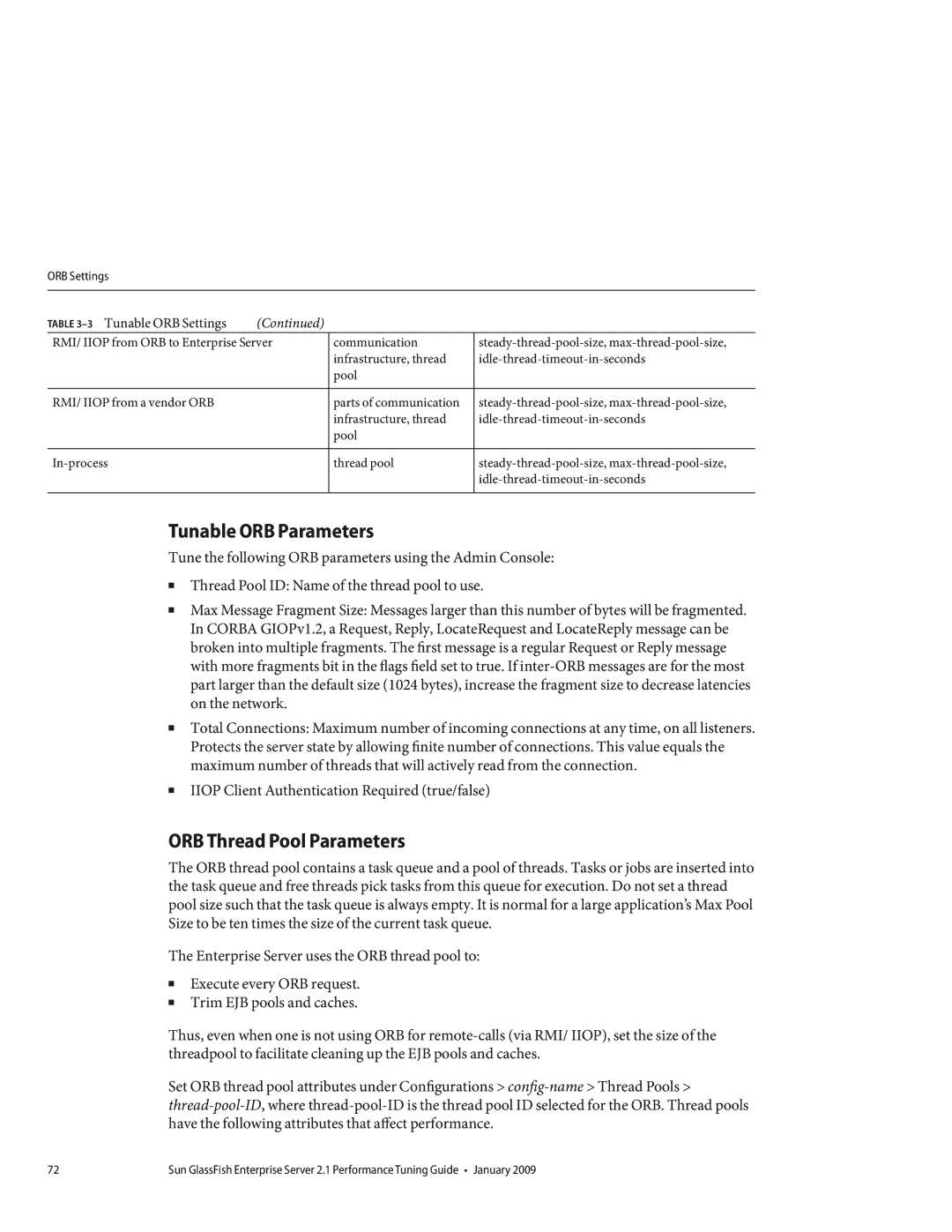ORB Settings
TABLE | (Continued) |
|
|
RMI/ IIOP from ORB to Enterprise Server | communication | ||
|
| infrastructure, thread | |
|
| pool |
|
|
|
|
|
RMI/ IIOP from a vendor ORB |
| parts of communication | |
|
| infrastructure, thread | |
|
| pool |
|
|
|
|
|
| thread pool | ||
|
|
| |
|
|
|
|
Tunable ORB Parameters
Tune the following ORB parameters using the Admin Console:
■Thread Pool ID: Name of the thread pool to use.
■Max Message Fragment Size: Messages larger than this number of bytes will be fragmented. In CORBA GIOPv1.2, a Request, Reply, LocateRequest and LocateReply message can be broken into multiple fragments. The first message is a regular Request or Reply message with more fragments bit in the flags field set to true. If
■Total Connections: Maximum number of incoming connections at any time, on all listeners. Protects the server state by allowing finite number of connections. This value equals the maximum number of threads that will actively read from the connection.
■IIOP Client Authentication Required (true/false)
ORB Thread Pool Parameters
The ORB thread pool contains a task queue and a pool of threads. Tasks or jobs are inserted into the task queue and free threads pick tasks from this queue for execution. Do not set a thread pool size such that the task queue is always empty. It is normal for a large application’s Max Pool Size to be ten times the size of the current task queue.
The Enterprise Server uses the ORB thread pool to:
■Execute every ORB request.
■Trim EJB pools and caches.
Thus, even when one is not using ORB for
Set ORB thread pool attributes under Configurations >
72 | Sun GlassFish Enterprise Server 2.1 Performance Tuning Guide • January 2009 |
